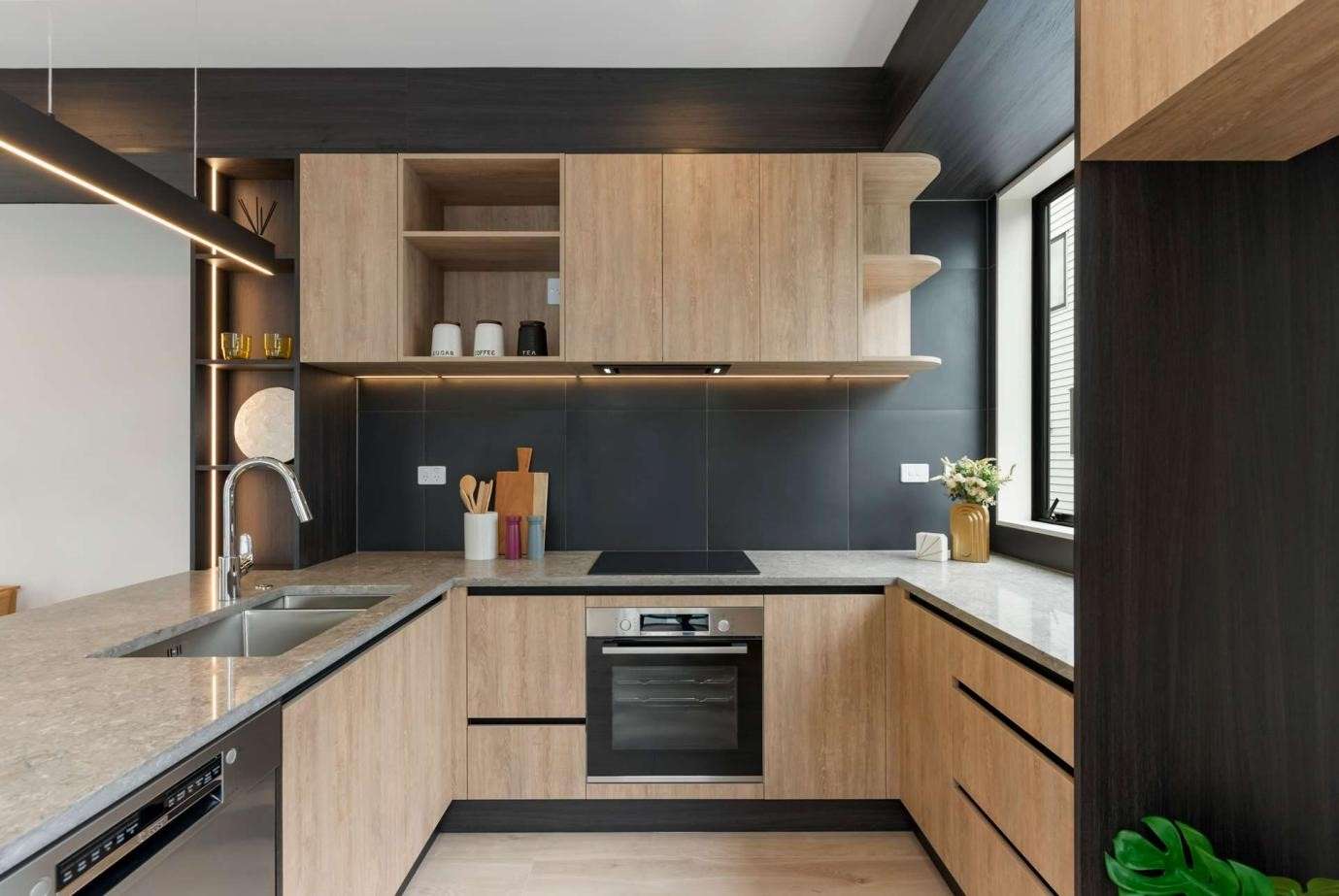
How Much Does a Kitchen Renovation Cost in New Zealand? Discover Key Insights!
The thought of transforming a kitchen often sparks excitement—a remodel can bring a new look, better functionality, and more space to gather with friends and whānau. Yet almost immediately, practical questions arise. Not least: what does a kitchen renovation actually cost in New Zealand, and how can you obtain a reliable renovation estimate? The answer covers a diverse range, with costs shaped by choices, scale, and the quality of workmanship.
Many Kiwis find themselves inspired by stunning showrooms or design portfolios, like those of Awesome Kitchens, and start envisioning their dream space. Whether it’s contemporary minimalism or timeless tradition, every project has its own price tag determined by various cost factors. Understanding what drives those numbers can make all the difference to planning a smooth kitchen renovation and overall home improvement.
The Range: From Basic to High-End in Aotearoa
Kitchen renovations in New Zealand span a broad spectrum, influenced not just by size, but also the materials chosen, the extent of customisation, and the level of craftsmanship, making NZ a unique market for such projects. Here’s a quick breakdown:
| Renovation Level | Typical Price Range | Notes |
| Budget / Cosmetic | $10,000 – $25,000 | Retain layout, upgrade surfaces & doors |
| Mid-Range | $25,000 – $45,000 | Layout changes, new cabinetry, appliances |
| Premium | $45,000 – $100,000+ | Custom designs, luxury finishes |
These costs are ballpark figures and can shift based on the specifics of your project, location, such as New Zealand, and preferred suppliers.

Breaking Down the Big Numbers
Prices reflect a composite of choices, from foundational elements like countertops and flooring right through to finishing touches. It’s often surprises in these details that stretch budgets.
Let’s consider some common factors, including hiring a contractor, that influence costs:
- Size of the Space: A small apartment galley kitchen will cost less than an expansive entertainer’s kitchen with an island and scullery.
- Material Selection: Laminate benchtops and melamine doors keep costs reasonable, while engineered stone, custom timber, and imported hardware push budgets up.
- Customisation: Custom cabinetry tailored to unique spaces or features increases labour costs compared to standard modular options.
- Appliances: Integrated, European and luxury appliances quickly add thousands to the bottom line.
- Trades: Plumbing, electrical, and structural changes are typically priced separately and vary by complexity.
A Closer Look at Core Components
Understanding where the bulk of your investment goes gives a clearer picture of why kitchen renovations aren’t a cheap fix, and how a comprehensive home renovation can impact overall costs. Here’s a rundown of key elements and their usual proportions within a standard renovation budget:
| Component | Share of Budget (%) | What’s Included |
| Cabinetry & Hardware | 35–45 | Cabinets, handles, soft-closing drawers |
| Benchtops | 10–20 | Laminate, engineered stone, timber |
| Appliances | 10–20 | Oven, hob, fridge, dishwasher |
| Labour & Installation | 15–25 | Builders, installers, project management |
| Trades (Electrical, Plumbing) | 8–15 | Moving pipes/sockets, new wiring |
| Splashback, Paint, Flooring | 5–15 | Tiling, glass, painting, flooring |
Everyone’s priorities differ—some might splurge on premium benchtops and save on basic tapware, while others opt for statement lighting or state-of-the-art appliances.
Customisation: The Awesome Kitchens Approach
In Auckland, Awesome Kitchens has become renowned for a philosophy rooted in deep client connection, resonating with homeowners throughout NZ. With a showroom designed to stir creativity and an experienced team, each kitchen renovation is a tailored experience rather than a one-size-fits-all template.
Their approach means no two kitchens are identical. This bespoke process drives price variance, but also ensures the finished product is a true reflection of the people using it. Here are some ways customisation could impact your costs:
- Layout Redesign: Walls moved or rooms re-configured for open-plan living demand more structural work.
- Integrated Solutions: Walk-in pantries, hidden storage, and built-in appliances are increasingly popular and ramp up labour hours.
- Premium Finishes: Matte finishes, anti-fingerprint surfaces, and custom splashbacks are in high demand.
Smart Tech: Wireless charging, under-cabinet lighting, and appliance connectivity are modern must-haves that bring long-term value.

The Value of Quality Materials
Kiwi homeowners in New Zealand appreciate robust, reliable products that last. Awesome Kitchens sources locally whenever possible, tapping trusted names such as Hafele and Laminex. Not only does this support local industry, it assures peace of mind when it comes to durability and availability of parts.
Opting for quality at the outset saves on repairs and replacements down the line. Cheaper hinges, for example, might save a few hundred dollars upfront but can fail early, leading to ongoing maintenance headaches.
Hidden Figures: What’s Not Always in the Quote
Sometimes, projects run over budget because the initial renovation estimate misses important details, such as the unexpected cost of flooring changes. Here are a few items that can nudge the final bill higher:
- Consent Fees: Structural changes might require building consents, especially if you’re moving walls or plumbing.
- Remedial Work: Old wiring or water damage hidden behind walls may only be discovered after demolition.
- Upgrades: It’s common for clients to upgrade selections mid-project, from appliances to tapware, impacting final costs.
Keeping a contingency fund of at least 10 per cent is a practical strategy. It ensures you’re not caught out by unexpected expenses that may arise from hiring a contractor.
Timeline: How Long Should a Renovation Take?
Price isn’t the only thing that matters; timing is key for many families juggling work, school, and cooking disruptions during a home improvement renovation. At Awesome Kitchens, streamlined operations and in-house installation teams shrink timelines, with typical remodels, including countertops, taking between 4–8 weeks once manufacturing begins.
- Initial Consultation: 1–2 weeks for design and planning meetings
- Manufacture: 4–6 weeks, depending on customisation
- On-site Installation: 1–2 weeks for cabinetry, benchtops, electrics, and plumbing
- Final Finish: 1 week or less
Advanced machinery, such as state-of-the-art CNC and edge banders, turn around custom cabinetry faster with greater precision, ensuring kitchen renovation projects help families get back to normal life sooner.
A Kiwi Renovation Story
Auckland’s Awesome Kitchens has been part of hundreds of home transformations, home improvement, home renovation, and remodel projects since its beginnings in Penrose in 2016. In 2020, their move to Onehunga introduced an even larger showroom that reflects the range and creativity they offer.
Clients speak to a distinctive process—from custom-tailored designs to hassle-free installation, including expert flooring solutions. The team’s reputation, alongside their skilled contractors, rests firmly on clear communication, swift lead times, top-to-bottom quality, and expertly crafted countertops.
This commitment is reflected in their project management ethos: working closely with each client to reflect their style, aims, and budget, then expertly crafting that vision into a lasting centrepiece of daily life.
Ways to Make Your Budget Go Further
For those keen to avoid overspending, there are several strategic decisions that can make money stretch without sacrificing wow-factor:
- Retain Existing Layout: Minimising plumbing and electrical work frees up funds for better cabinetry or appliances.
- Mix Materials: Pairing premium surfaces in visible areas with budget alternatives for interiors or less-used spaces.
- Staged Upgrades: Splitting out works (e.g., new cabinetry this year, appliances later) spreads investment.
- Reface Rather Than Replace: Sometimes updating just doors and benchtops delivers a dramatic change for much less.
Learning to balance wishlist items against essentials and manage renovation costs is where experienced designers truly shine.
Common Mistakes to Avoid
It’s easy to get caught out by pitfalls that disrupt renovation dreams. Here are a few to watch out for:
- Underestimating Costs: Even modest projects can spiral if all components and trades aren’t factored in.
- DIY Shortcuts: Saving on labour can be tempting, but mistakes are costly to fix; skilled designers and builders make a lasting difference.
- Overwhelming Trends: Dialling up every possible feature or style can leave kitchens feeling cluttered rather than elegant.
- Ignoring the Big Picture: Pay attention to workflow, storage, and ergonomics; a kitchen should not only look beautiful but feel effortless to use.
The Power of a Well-Planned Kitchen
When renovation budgets are invested wisely, the value flows far beyond monetary return. Homeowners gain a space that enhances daily life, supports entertaining, and grows alongside changing needs.
At Awesome Kitchens, a philosophy grounded in listening closely to clients, embracing technology, and upholding Kiwi quality has made them a trusted name. Each kitchen is seen as the heart of the home—crafted not just for cooking, but for chatting, celebrations, and everyday comfort. Factoring in every detail, from consultation to completion, ensures every dollar spent brings enduring satisfaction and utility, starting with a comprehensive renovation estimate. So while costs in New Zealand can vary, the difference made by thoughtful planning and expert guidance is always worth it.
